文章目录
- 1. 什么是限流
- 2. 常见的限流策略
- 2.1 漏斗算法
- 2.2 令牌桶算法
- 2.3 次数统计
- 3. 令牌桶代码编写
- 4. 接口测试
- 5. 测试结果
1. 什么是限流
限流就是在用户访问次数庞大时,对系统资源的一种保护手段。高峰期,用户可能对某个接口的访问频率急剧升高,后端接口通常需要进行DB操作,接口访问频率升高,DB的IO次数就显著增高,从而极大的影响整个系统的性能。如果不对用户访问频率进行限制,高频的访问容易打跨整个服务
2. 常见的限流策略
2.1 漏斗算法
我们想象一个漏斗,大口用于接收客户端的请求,小口用于流出用户的请求。漏斗能够保证流出请求数量的稳定。
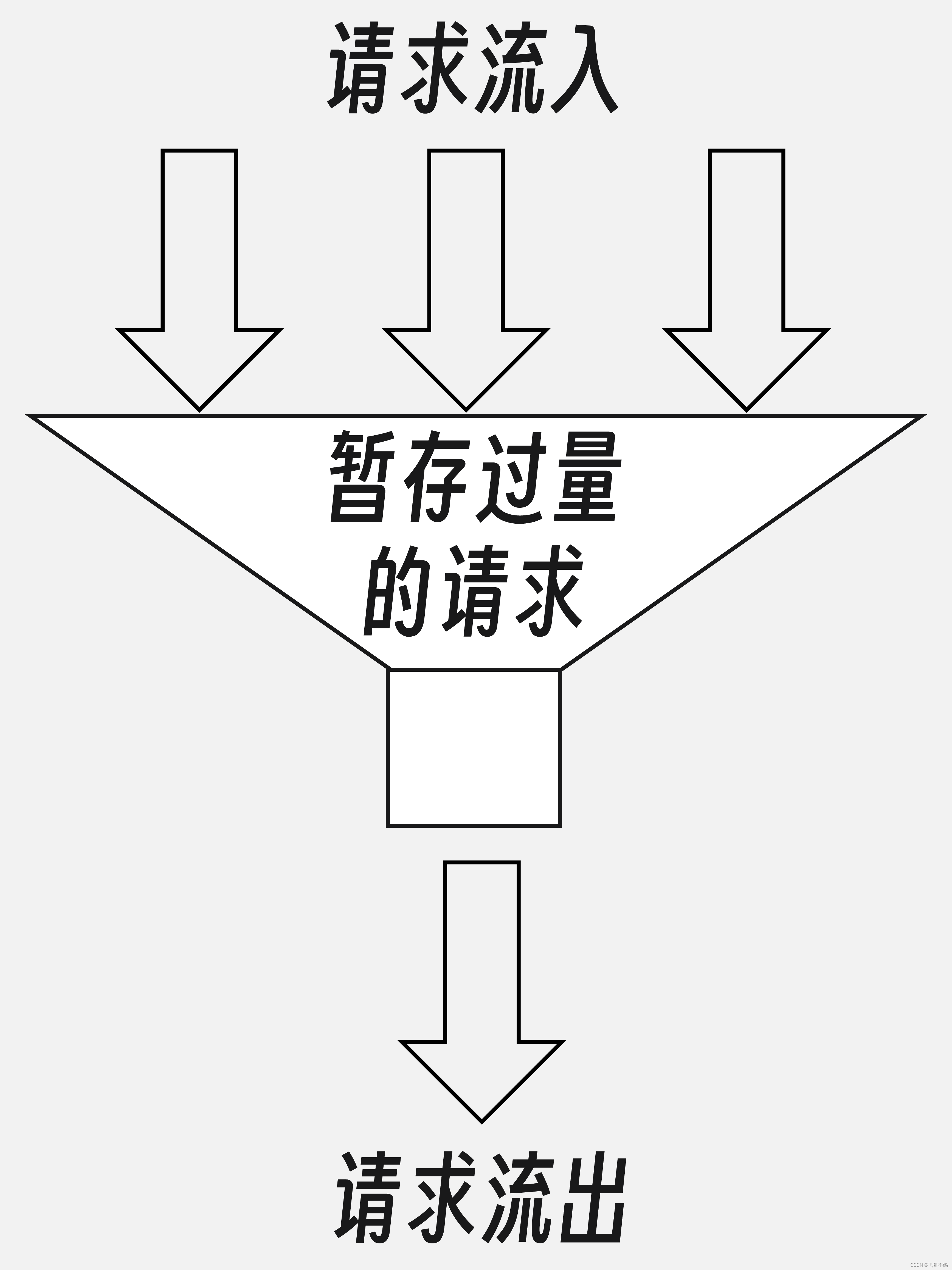
2.2 令牌桶算法
令牌桶算法,每个请求想要通过,就必须从令牌桶中取出一个令牌。否则无法通过。而令牌会内部会维护每秒钟产生的令牌的数量,使得每秒钟能够通过的请求数量得到控制
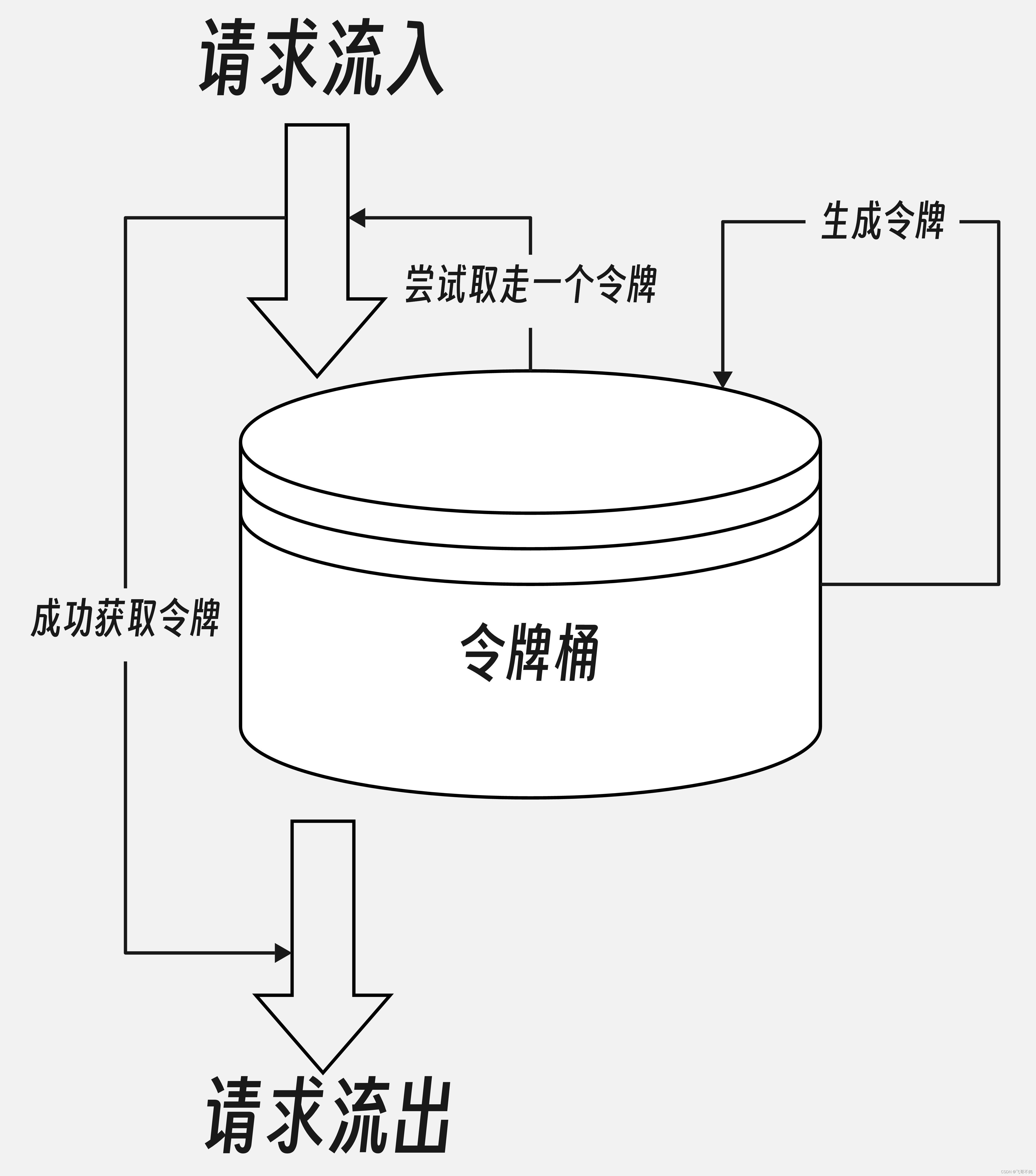
2.3 次数统计
次数统计的方式非常直接,每一次请求都进行计数,并统计时间戳。如果下一次请求携带的时间戳在一定的频率内,进行次数的累加。如果次数达到一定阈值,则拒绝后续请求。直到下一次请求时间戳大于初始时间戳,重置接口次数与时间戳
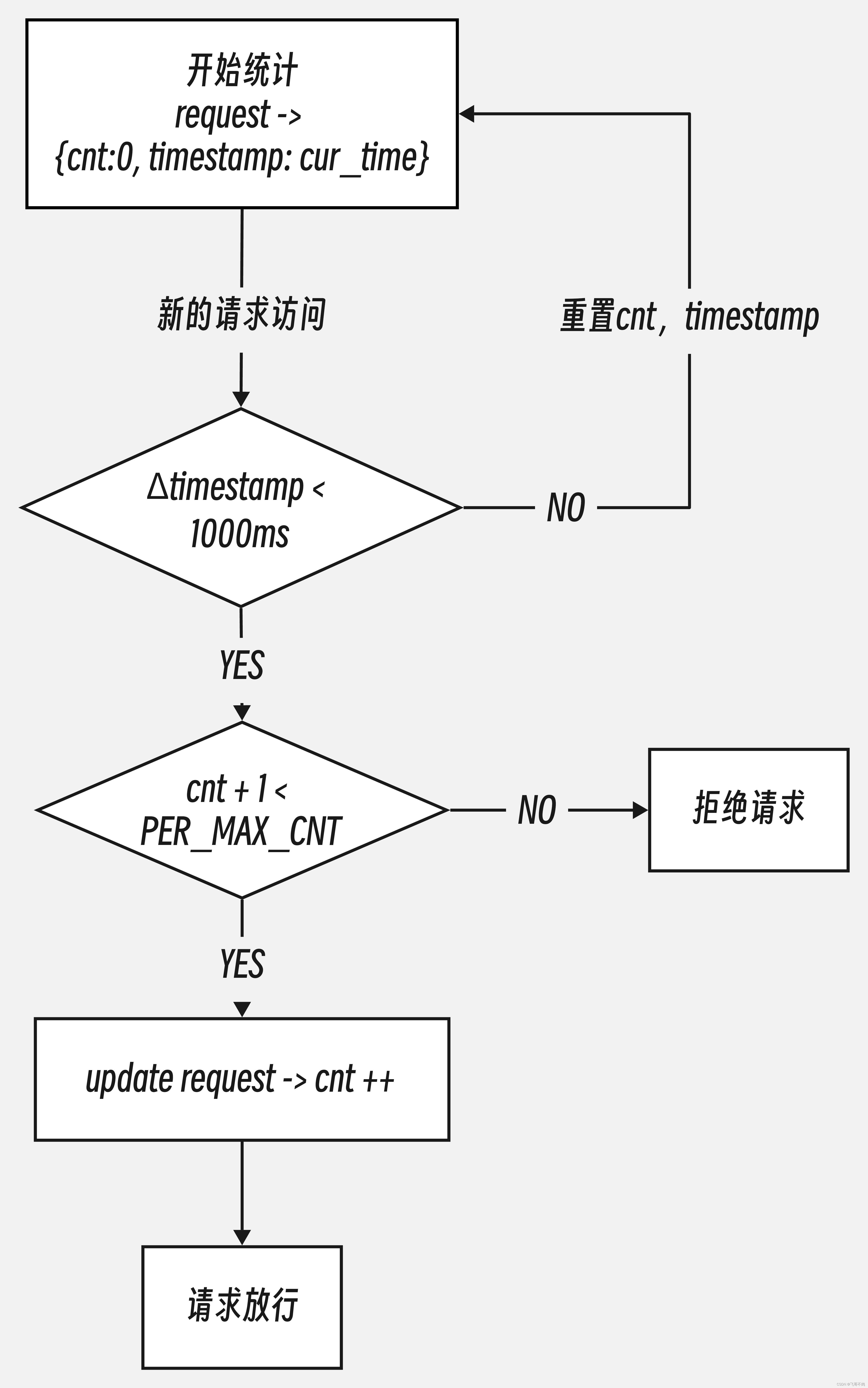
3. 令牌桶代码编写
令牌桶算法我们可以使用Google guava包下的封装好的RateLimiter,紧紧抱住大爹大腿
另外,ip频率限制是一个横向逻辑,该功能应该保护所有后端接口,因此我们可以采用Spring AOP增强所有后端接口
另外,我们需要对同一个用户,对同一个接口访问次数进行限流,这意味着我们需要限制的是——(用户,接口)这样的一对元组。用户可以通过ip进行限定,也就是说,后端是同一个ip针对同一个请求的访问进行限流
因此我们需要为每一个这样的(ip,method)使用令牌桶限流,(ip,method)-> RateLimiter。ip + method这一对元组唯一确定一个RateLimiter
我们可以采用Map缓存这样的一一对应的关系
But,HashMap显然不适合,应为HashMap不防并发;另外ConcurrentHashMap也不合适,假如一个用户发出一个请求后就下线了,那么这个key就会长久的存活于内存中,这极大的增加了内存的压力
因此我们采用Google的Cache
Google大爹提供的Cache功能极其强大,读者可以自行阅读下面文档
/*** A builder of {@link LoadingCache} and {@link Cache} instances having any combination of the* following features:** <ul>* <li>automatic loading of entries into the cache* <li>least-recently-used eviction when a maximum size is exceeded* <li>time-based expiration of entries, measured since last access or last write* <li>keys automatically wrapped in {@code WeakReference}* <li>values automatically wrapped in {@code WeakReference} or {@code SoftReference}* <li>notification of evicted (or otherwise removed) entries* <li>accumulation of cache access statistics* </ul>* /
IpLimiterAspect.java
import com.fgbg.demo.utils.RequestUtils;
import com.google.common.cache.Cache;
import com.google.common.cache.CacheBuilder;
import com.google.common.util.concurrent.RateLimiter;
import lombok.extern.slf4j.Slf4j;
import org.aspectj.lang.ProceedingJoinPoint;
import org.aspectj.lang.Signature;
import org.aspectj.lang.annotation.Around;
import org.aspectj.lang.annotation.Aspect;
import org.aspectj.lang.reflect.MethodSignature;
import org.springframework.beans.factory.annotation.Autowired;
import org.springframework.stereotype.Component;
import org.springframework.web.bind.annotation.RestController;import java.util.concurrent.TimeUnit;/*** 限制每个ip对同一个接口的访问频率*/
@Component
@Aspect
@Slf4j
@RestController
public class IpLimiterAspect {@Autowiredprivate RequestUtils requestUtils;// 每秒生成1个令牌, 同个ip访问同个接口的QPS为1private final double PERMIT_PER_SECOND = 1;// 创建本地缓存private final Cache<String, RateLimiter> limiterCache = CacheBuilder.newBuilder().expireAfterAccess(5, TimeUnit.MINUTES).build();@Around("execution(* com.fgbg.demo.controller..*.*(..))")public Object around(ProceedingJoinPoint proceedingJoinPoint) throws Throwable {// 构造keySignature signature = proceedingJoinPoint.getSignature();MethodSignature methodSignature = (MethodSignature) signature;String methodName = proceedingJoinPoint.getTarget().getClass().getName() + "." + methodSignature.getName();String key = requestUtils.getCurrentIp() + "->" + methodName;// 获取key对应的RateLimiterRateLimiter rateLimiter = limiterCache.get(key, () -> RateLimiter.create(PERMIT_PER_SECOND));if (! rateLimiter.tryAcquire()) {// 如果不能立刻获取令牌, 说明访问速度大于1 次/s, 触发限流log.warn("访问过快, 触发限流");throw new RuntimeException("访问过快, 触发限流");}log.info("接口放行...");return proceedingJoinPoint.proceed();}
}RequestUtils.java
import org.springframework.beans.factory.annotation.Autowired;
import org.springframework.stereotype.Component;import javax.servlet.http.HttpServletRequest;@Component
public class RequestUtils {@Autowiredprivate HttpServletRequest httpServletRequest;public String getCurrentIp() {return httpServletRequest.getHeader("X-Real-IP");}
}4. 接口测试
接口测试这块就比较随意了,笔者这里采用apifox进行接口测试。因为AOP逻辑是增强所有接口,因此这里选择了项目曾经暴露出的一个查询接口。点击运行,即可开始测试
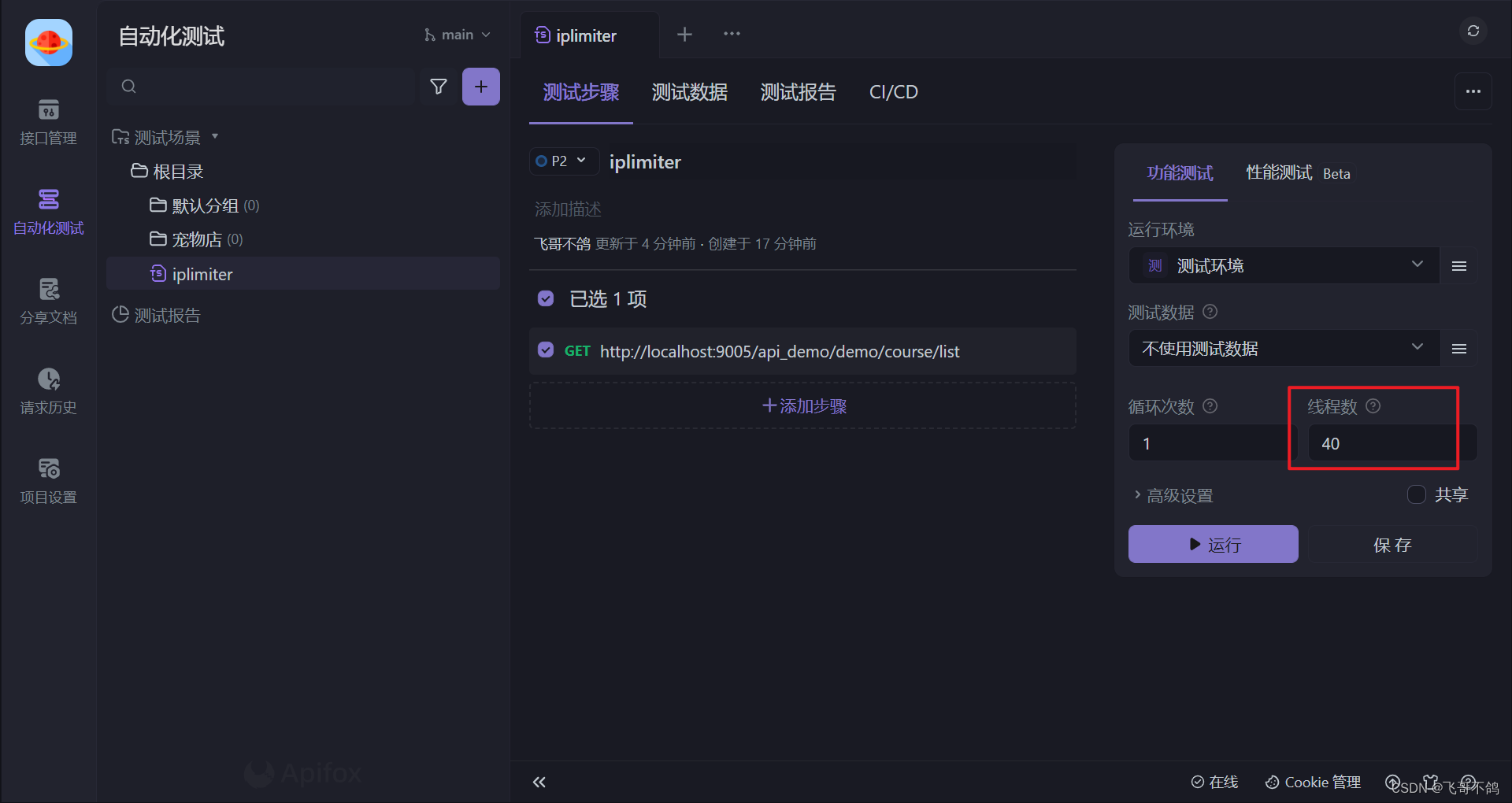
5. 测试结果
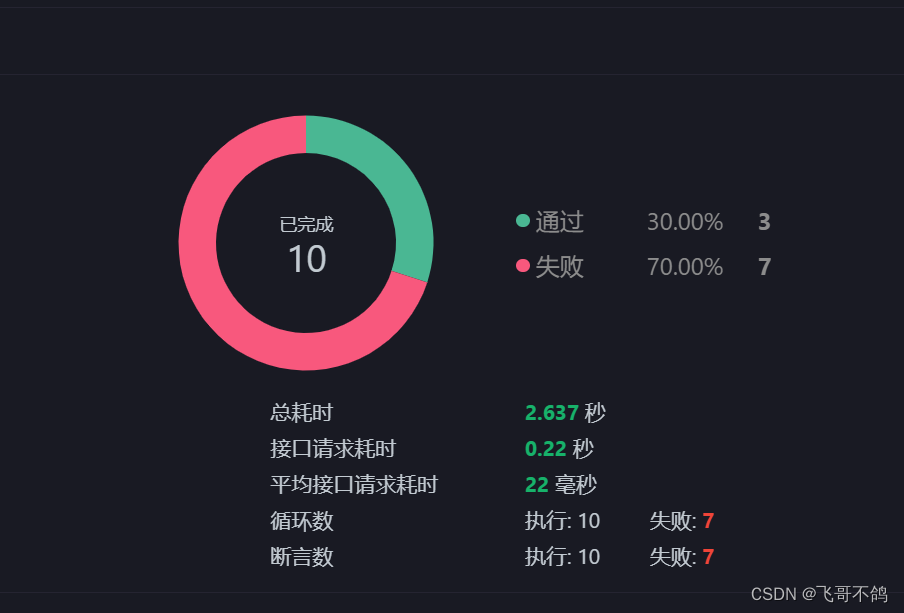
2.6s,分别在0,1,2s开始时,允许接口访问。10个请求中通过3个,失败7个,QPS = 1,限流成功

测试量达到40,QPS维持1,说明代码逻辑基本没有问题,Google yyds!


















下载编译以及调通测试demo)
